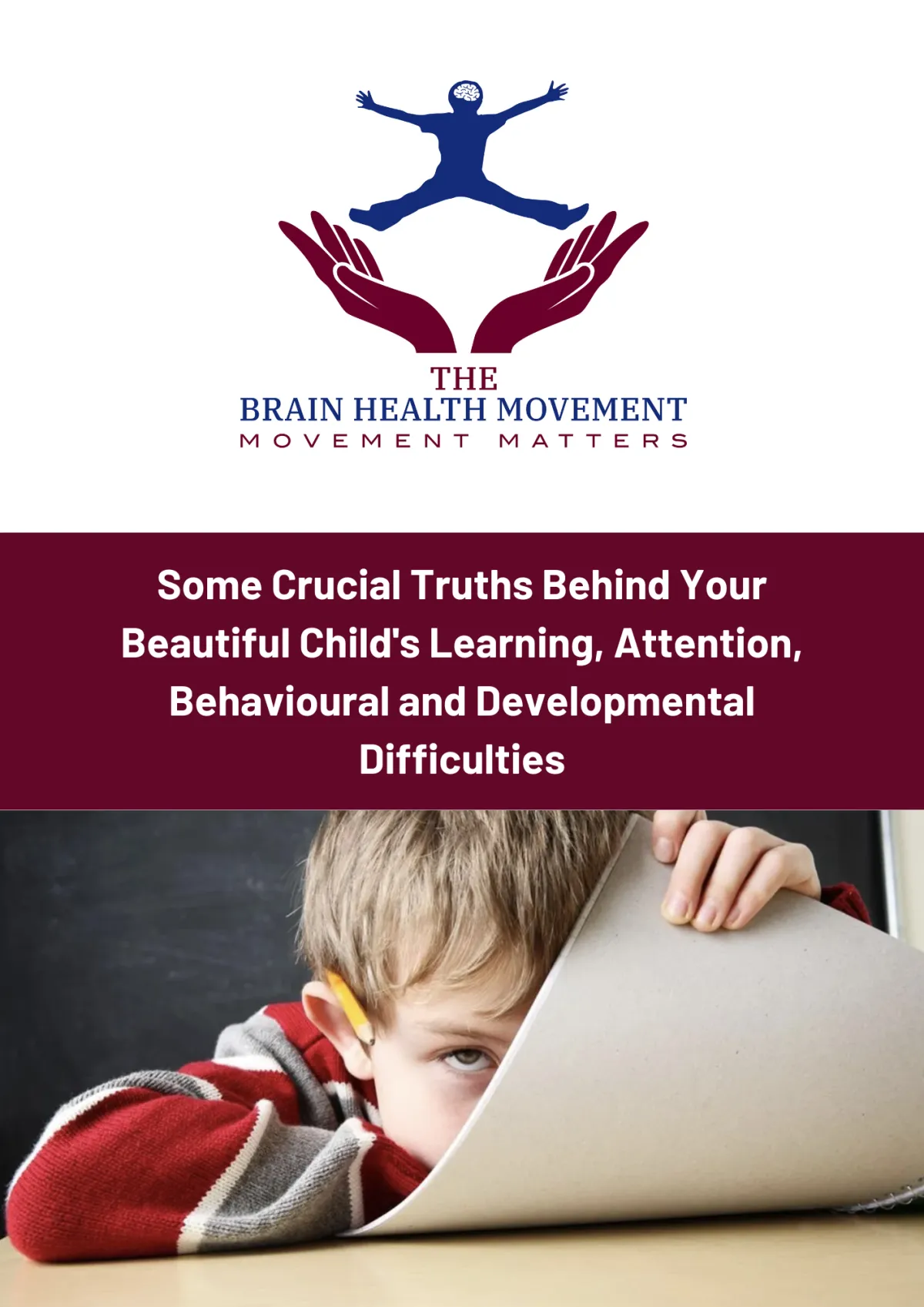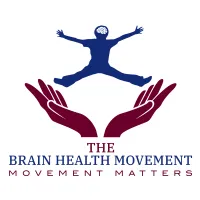FREE MASTERCLASS - Discover the real reasons behind your child’s struggles and what to do next.
THE BRAIN HEALTH MOVEMENT
Kind. Accessible. Effective.
THE BRAIN HEALTH MOVEMENT BLOG

Heavy Metals: The Hidden Burden your Child and Family could be Carrying
We often think of our bodies as separate from the outside world — protected, contained.
But in truth, we are deeply porous. Every breath, every bite, every drop of water connects us to our environment.
And while that connection is beautiful, it can also be dangerous.
Toxins — especially heavy metals like mercury, lead, and arsenic — cross that invisible line and settle into our tissues, quietly interfering with brain development, immune balance, and healing.

What are Heavy Metals?
Heavy metals are a category of metallic elements characterised by their relatively high atomic weights and densities, typically 5 times greater than water.
They accumulate in the food chain and the human body (including bone and soft tissue) over time, causing serious health problems.
Conditions linked to heavy metals do not just affect our children's healthy development, but as adults are linked to neurological conditions such as Alzheimer’s and Parkinson’s, as well as cardiovascular disease, kidney damage, reproductive issues, and cancer.
Heavy metals enter the environment from both natural sources (like volcanic eruptions and weathering of rocks) and human activities (such as mining, industrial processes, and the use of leaded fuels and paints).
At The Brain Health Movement, we’ve seen time and again how heavy metal toxicity can be a root contributor to our children's neuroinflammation, immune and behavioural dysregulation, and trigger persistent symptoms in children with PANS/PANDAS and other related conditions.

What You Need to Know
Mercury
Mercury hides in fish, dental fillings, electric switches, thermometers, fluorescent lights, some batteries and even skin creams.
Mercury can cross the blood-brain barrier, affecting motor control, mood, and immune function.
.
Lead
Lead may still lurk in older homes, pipes, some toys, jewellery and imported foods and medicines - and young brains are especially vulnerable to its effects.
Symptoms of lead exposure include abdominal pain, headaches, numbness, fatigue, dizziness, hypertension, kidney dysfunction, loss of appetite, fatigue, infertility, and insomnia. Chronic low-level exposure can lead to birth defects, mental retardation, autism, psychosis, allergies, dyslexia, hyperactivity, weight loss, shaky hands, muscular weakness, and paralysis (starting in the forearms).
.
Cadmium
Cadmium is a bluish white metal found in nickel-cadmium batteries, PVC plastics, paint pigments, agricultural chemicals like fertilizers, cigarettes, dental alloys, motor oil, and exhaust fumes. It is mostly absorbed into the lungs through inhalation, but it can also be ingested and taken up by the digestive tract.
Cadmium affects the liver, the kidneys, lungs, brain and bones, and passes through the placenta.
.
Arsenic
Exposure to arsenic occurs mostly in the workplace, near hazardous waste sites, or in certain areas of the world. Arsenic can also leach into groundwater.
Foods with elevated levels of arsenic include rice, shellfish, poultry, apple juice, root vegetables, and leafy greens. The FDA monitors arsenic levels in foods and regulates them to protect public health, particularly focusing on foods consumed by young children.
Chronic low levels of arsenic exposure can lead to progressive peripheral and central nervous changes, numbness and tingling, muscle tenderness, needles and pins in the hands and feet. Neuropathy (inflammation and wasting of the nerves) can occur gradually over time. Arsenic toxicity can also cause birth defects, liver damage, and increased risk of certain cancers.
What You Can Do
We can’t control everything — but we can reduce exposure and support the body’s detoxification pathways:
✅ Use a water filter that removes heavy metals
✅ Prioritise organic, local produce where possible
✅ Sweat it out: exercise, sauna, hot yoga
✅ Support gut function with probiotics and fermented foods
✅ Add binders like cilantro, garlic, chlorella — and ask your practitioner about modified citrus pectin and alginates, which are clinically shown to reduce heavy metal loads safely

Why this Matters Now
Your child’s healing might be stuck — not because you're missing something, but because something is stuck in them.
Heavy metals aren’t just ancient history.
They’re in our food, our water, and our homes — and they are not benign.
But you are not powerless.
➡️ Share this email with a fellow parent who needs this information.
➡️ Follow us on Instagram [@thebrainhealthmovement] for more real parent stories and root cause education from world leading experts.
Let’s make healing contagious.
References:
Cook, D.E., Beach, T, Luzzadder-Beach, S., et al. Environmental legacy of pre-Columbian Maya mercury. Front. Environ. Sci. 2022;10. https://doi.org/10.3389/fenvs.2022.986119
Kimáková T, Kuzmová L, Nevolná Z, Bencko V. Fish and fish products as risk factors of mercury exposure. Ann Agric Environ Med. 2018;25(3):488-493.
Huang W-L, Chang W-H, Cheng S-F, Li H-Y, Chen H-L. Potential Risk of Consuming Vegetables Planted in Soil with Copper and Cadmium and the Influence on Vegetable Antioxidant Activity. Applied Sciences. 2021; 11(9):3761.
Biswas, J.K., Warke, M., Datta, R. et al. Is Arsenic in Rice a Major Human Health Concern?. Curr Pollution Rep 6, 37–42 (2020).
Monro JA, Leon R, Puri BK. The risk of lead contamination in bone broth diets. Med Hypotheses. 2013 Apr;80(4):389-90.
Paul K. Consumer Beware: These Popular Collagen Supplements Contain Heavy Metals. Organic Consumers Association
Kennedy OJ, Roderick P, Buchanan R, Fallowfield JA, Hayes PC, Parkes J. Systematic review with meta-analysis: coffee consumption and the risk of cirrhosis. Aliment Pharmacol Ther. 2016 Mar;43(5):562-74.
Jaishankar M, Tseten T, Anbalagan N, Mathew BB, Beeregowda KN. Toxicity, mechanism and health effects of some heavy metals. Interdiscip Toxicol. 2014 Jun;7(2):60-72.
Alengebawy A, Abdelkhalek ST, Qureshi SR, Wang MQ. Heavy Metals and Pesticides Toxicity in Agricultural Soil and Plants: Ecological Risks and Human Health Implications. Toxics. 2021 Feb 25;9(3):42.

Are you feeling overwhelmed and unsupported with your child's struggles?
Does the lack of clear guidance, scientific explanation or support from school, SEN, the NHS or anywhere else, leave you frustrated and without clear direction?

